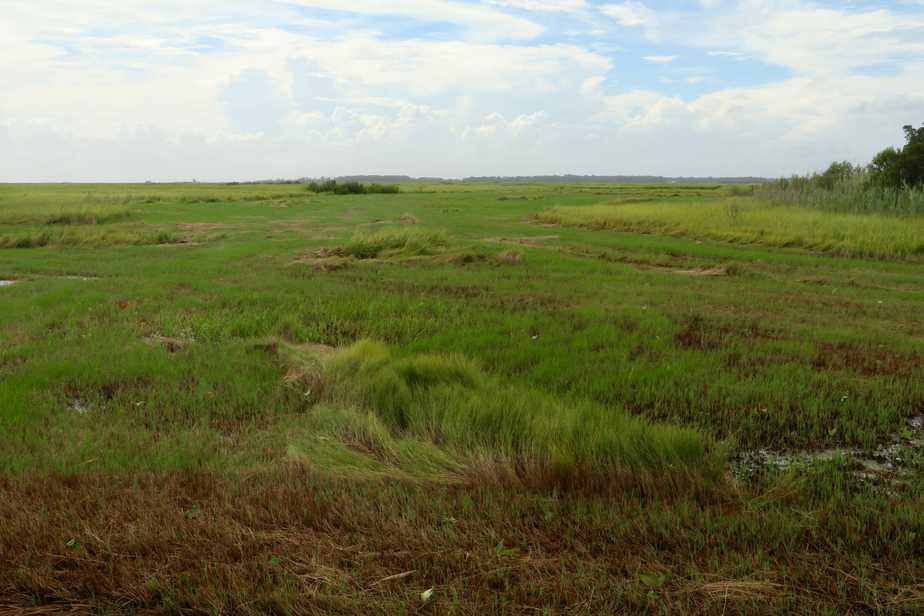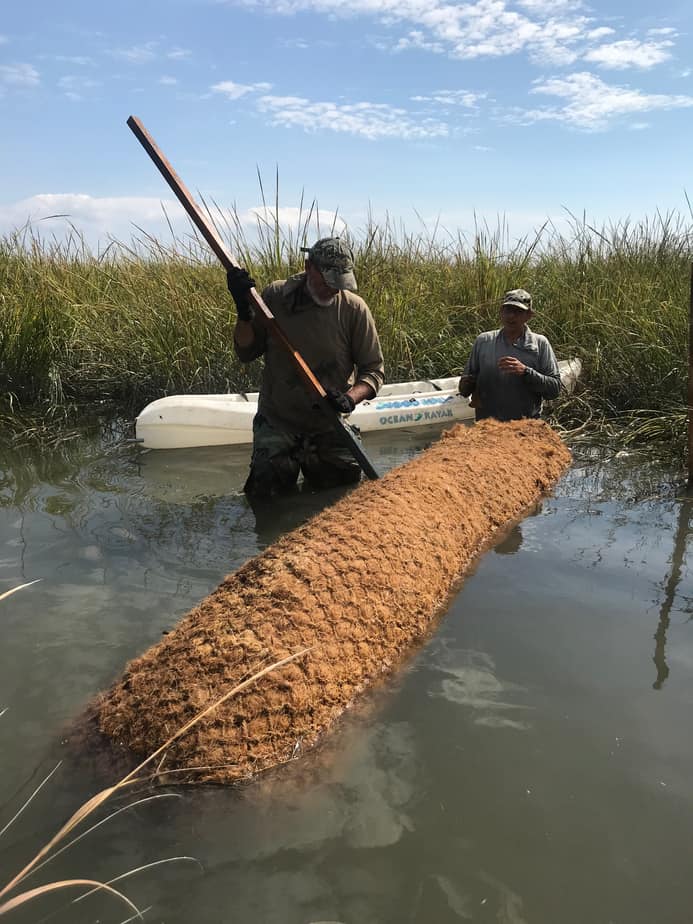Centuries of Farming the Marsh has Left an enduring Legacy
Centuries of cutting salt marsh vegetation as hay in Delaware Bay left an enduring legacy fraught with danger. Farmer diked the tidal wetlands starving the marsh of sediment. This accelerated natural decomposition. Marsh levels fell relative to the tide, so when the farming ended in the 60’s the bay rapidly eroded the damaged and fragile marsh. Large areas of the Bayshore were lost and the erosion continues to the day. Unfortunately, it is now exacerbated by a 4mm yearly rise in sea levels caused by climate change.
This week a partnership of experts will begin a new effort to reverse damaged by salt hay farming. The goal of the project is to restore 1.8 feet of mud lost by farming with new sediment dredged from an adjacent creek. This creek ends in a boat ramp choked with mud from the eroded wetlands it drains. We will create our own dike made of vegetative logs or Coir Logs, and begin to reverse the process started 200 years ago. We intend to bring the marsh height back to its naturally stable level – marsh vegetation just barely flooded on a normal tide. The productivity of the wetland will improve and more importantly it will be stable providing

-

-

-

The three aerial photos above show the rapid deterioration of an abandoned salt hay farm. A substantial portion of the Delaware Bay Marsh suffers a similar problem. Climate change and sea level rise will only make the problem worse.
A New Kind of Marsh Stewardship
Our second goal is to conduct a restoration experiment. Over the next months, we will slowly raise with the height of this marsh at first to assess our method. Will the Coir Logs provide enough of a barrier to contain the mud? How much drainage is necessary to ensure gradual dewatering of the slurry of mud and water pumped into the contained area. Finally, how will it resist the winter and then how will it regrow? These questions cannot be answered with just books or judgment. We are farmers assessing conditions for a good crop of spartina alterniflora.
This American Littoral Society Project will create a structurally sound but ecologically beneficial solution to a complex problem plaguing the bay. Our project offers hope for a long-lasting solution by making new tools to accomplish it. If anyone would like to help with this project, please contact Shane Godshaw
read next post on Thompson’s restoration
-

Aerial view of the marsh restoration site -

Stockton Center for Coastal Studies surveys the boundary while placing conduit pole markers to guide the placement of the Coir Logs -

Mike Fitzpatrick and Joe Smith of Niles-Smith Conservation test out the placement of a 24in Coir Log. We tranported the log by Kayak at high tide -

This Coir log is being used to test its resistance to the ebb and flow of the tide







